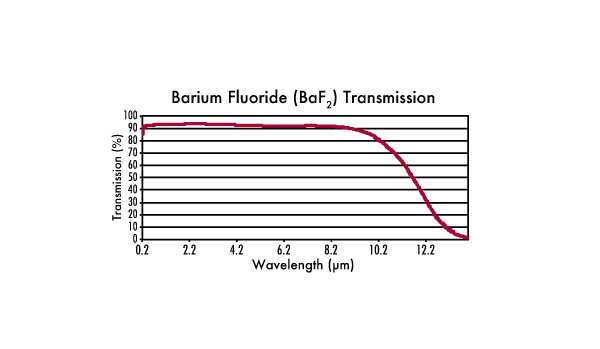
Precision Flat Barium Fluoride (BaF2) Windows Also Available
ISP Optics Barium Fluoride (BaF2) Wedged Windows feature a 30 arcmin wedge to eliminate etalon effects, improving readout in detection and spectroscopy applications. With a low index of refraction of 1.48, these windows provide high transmission from 200nm to 12μm without the need of an anti-reflection (AR) coating. Barium fluoride windows can be used up to 800°C in a dry environment, but prolonged exposure to moisture can degrade transmission in the vacuum ultraviolet range. ISP Optics Barium Fluoride (BaF2) Wedged Windows are ideal for infrared spectroscopy, thermal imaging, and general UV-IR detection applications. Barium fluoride is also a fast scintillator and can be used for the detection X-rays, gamma rays, or other high energy particles.
Note: These optical windows are very sensitive to thermal shock.

or view regional numbers
QUOTE TOOL
enter stock numbers to begin
Copyright 2023, Edmund Optics Inc., 101 East Gloucester Pike, Barrington, NJ 08007-1380 USA
California Consumer Privacy Acts (CCPA): Do Not Sell or Share My Personal Information
California Transparency in Supply Chains Act